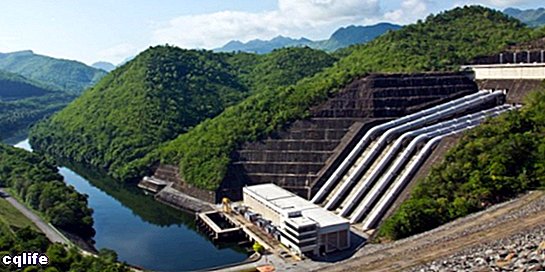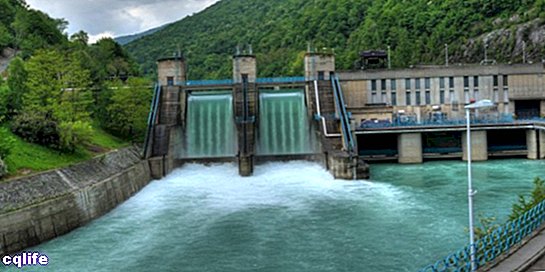- What is hydraulic energy?
- How do hydroelectric plants work?
- Advantages of hydropower
- Disadvantages of hydropower
- Importance of hydropower
- Examples of hydropower
We explain what hydraulic energy is and how a hydroelectric plant works. The advantages and disadvantages of this energy and examples.

What is hydraulic energy?
It is known as hydraulic energy, hydro energy or hydropower to that obtained from the use of the Kinetic energy me potential from currents, falls or waterfalls. It is a form of energy long used in the history of the humanity and at different scales, since it can be transformed into numerous other forms of useful energy.
In general, hydropower is considered safe, renewable and clean, since it does not deplete the Water that it uses, nor does it by-producetoxic substances or pollutants.
However, it usually has a environmental impact Considerable given the impact that installations can have, especially on a large scale, as is the case with hydroelectric dams, which modify the flow of rivers, flood dry lands and can even change the quality of the water.
For centuries, the riverbed has been used with mills and rotors to take advantage of its force and converting it into mechanical energy, either to grind grains or wheat, or to generate electricity. The force of water, its fluidity and its abundance make these mechanisms an ideal resource for humanity.
How do hydroelectric plants work?

Hydroelectric plants are the best known case of using hydraulic energy to, in this case, generate electric power. This is carried out by locating the power plant in a natural waterfall, riverbed or by building a hydroelectric dam (if it does not have the necessary height).
The logic of these locations is to take advantage of the gravitational potential energy of the water or the intensity of its current, to make the liquid move a hydraulic turbine constantly, generating a rotational movement that is transferred to an electricity generator.
This electrical energy can then be transmitted through the network to homes and businesses that require it.
Advantages of hydropower
Hydraulic power has the following virtues:
- It is renewable. Well, they do not waste the water of the rivers, nor do they affect its drying.
- It is cheap and easy to obtain. Given the abundance of water in the planet. There are, of course, the installation costs of hydroelectric plants, but that only counts as an initial investment.
- It is a form of clean energy. Well, it does not by-produce polluting substances as there are no processes of combustion neither raw material.
- It is economical in the long run. Since it does not depend on the entry of raw material or the fluctuations of its market.
Disadvantages of hydropower
The facilities can have a great environmental impact on rivers and lakes.This form of energy has the following defects:
- The environmental impact of large facilities in rivers and lakes.
- The elevated cost of the construction of the plants, as well as the secondary costs of the flooding of fertile land to build a dam.
- The alteration of the ecosystems downstream river, as the water that comes out of the plant lacks sediment.
- Extreme dry seasons and phenomena like El Niño can drastically reduce electricity production.
Importance of hydropower
This form of energy is key in the development of sustainable and ecological ways to satisfy the growing demand of energy in the post-industrial world.
The burning of fossil fuels is too polluting, thenuclear energy it carries some dangers and, along with the other ways of generating energy, it is not efficient enough. Hydropower and other forms of renewable electricity are increasingly seen as a necessary option in the future world.
Examples of hydropower
Examples of the use of hydraulic energy are:
- Hydraulic mills. Which are pushed by the bed of a river and serve to rotate a piston and in it a millstone, with which grains, seeds, wheat, etc. are ground or crushed. This same principle has been used with the force of the wind.
- The hydroelectric plants. Such as the Simón Bolívar Hydroelectric Plant, in Venezuela, also called Represa del Guri, which takes advantage of the flow of the Caroni River, a tributary of the Orinoco, to generate some 10,235 MW of electricity that supply the entire country.
